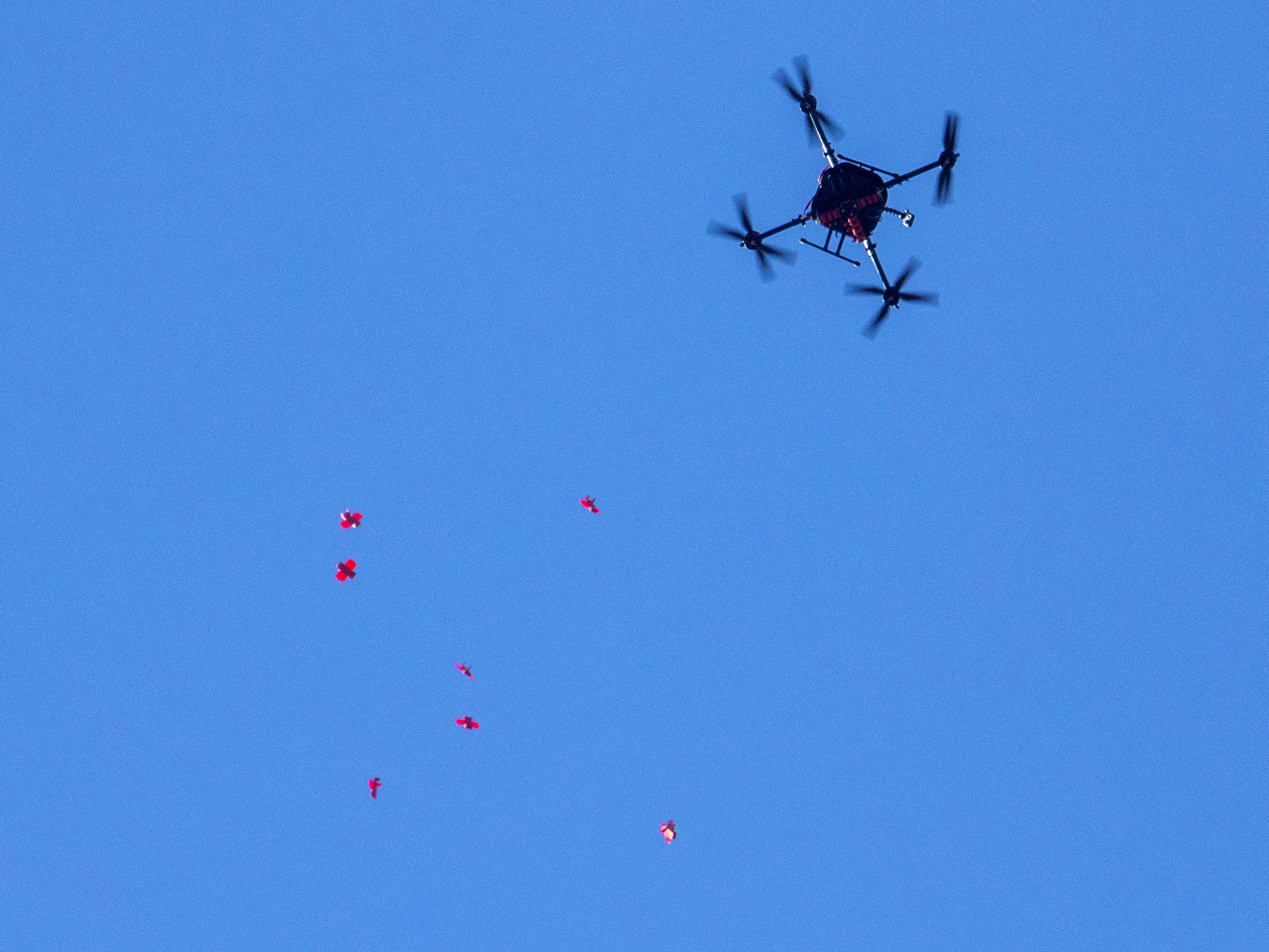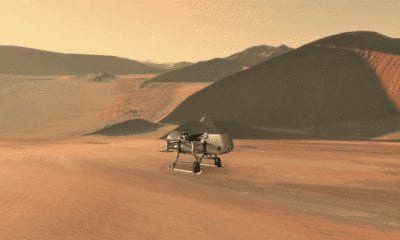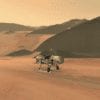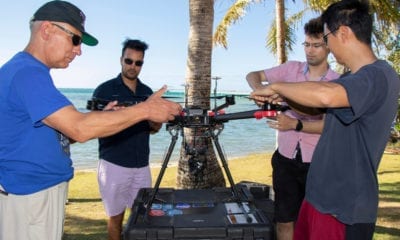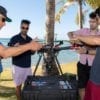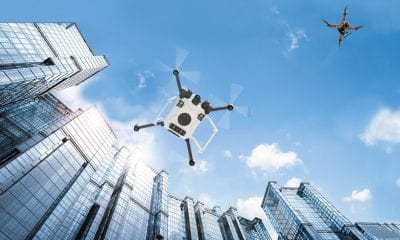News
NASA Tests Tiny Drones to Investigate Weather
Swarms of puny autonomous airborne drones may sound like a scene appropriate for a sci-fi movie-but it is now a reality as per a video of a test flight shared by NASA recently. NASA’s Langley Research Center released a video last week showing four large drones (called Hives) releasing over 100 smaller drones known as Cicadas at the Beaver Dam Airpark in Virginia.
- NASA tests a swarm of 100 US Navy Cicada drones
- The tiny drones travel in packs to investigate the weather
- The drones come equipped with temperature, air pressure and wind-speed sensors.
NASA just tested an insect-inspired swarm of drones equipped with air pressure, wind speed, and temperature sensors being released from a host “hive” drone, each carrying 25 little “CICADAS”. The CICADA, which stands for “Close-in Covert Autonomous Disposable Aircraft”.
Mounted on the underside of a Hive drone and then released on demand with a mechanical switch the CICADA was developed by the U.S. Navy to explore how these small drones could be deployed in hostile territories, according to reports from CNET.
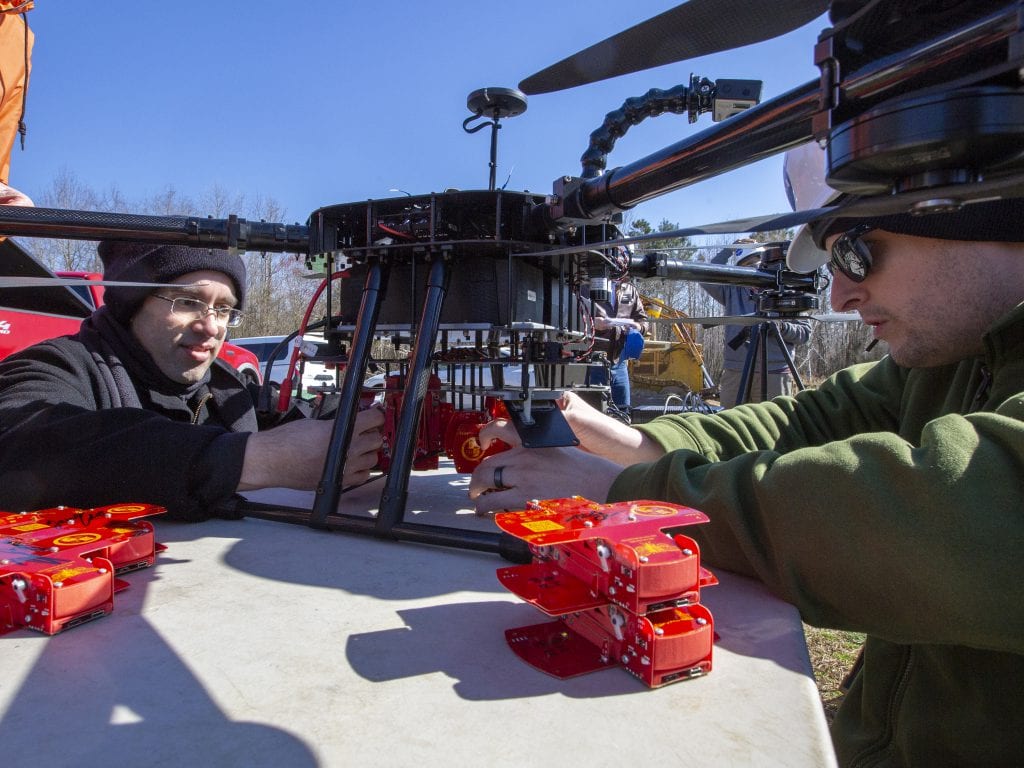
NASA software engineer, Matthew Vaughan (left), and a fellow researcher prepare the payload of Close-In Covert Autonomous Disposable Aircraft, or CICADAS, for the Hives. Credits: NASA/David C. Bowman
Once the sensors are activated the tiny drones glide to the ground like confetti, steering themselves in circles as they catch drafts of wind — and heralding progress toward ubiquitous drone swarms that collect data as they fill the skies.
The Navy’s description of the CICADA, which goes on to describe them as tactical, flying circuit boards, with a crisp statement that reads, “Cicada is a concept for a low-cost, GPS-guided, micro disposable air vehicle that can be deployed in large numbers to ‘seed’ an area with miniature electronic payload.”
NASA is exploring the usefulness of CICADA as tools for meteorologists. The drones could one day be dropped through clouds or storm systems to gather detailed data during their descents.
Having declared The Cicadas test a success, Langley Research Center is involved in more projects based on dainty flying machines that NASA might be interested in. The space agency is also investigating Marsbees, robotic bees that could help rovers better explore Mars.
While we wait for the robotic bees to create a sci-fi kind buzz kind, for now the Cicadas could one day be a silver lining in the clouds giving scientists and the weatherman a valuable inside look at storm systems.

